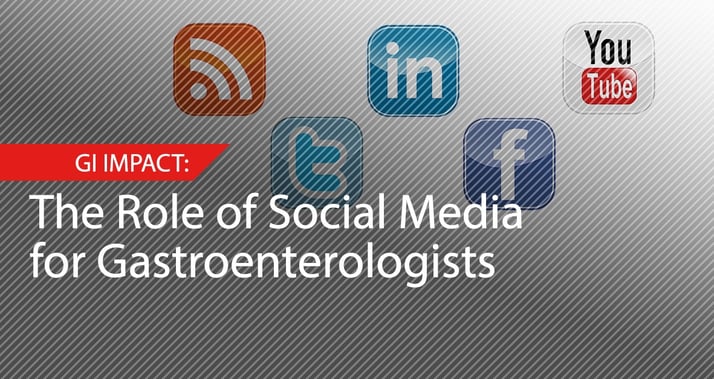
In a single day, approximately 500 million Twitter posts are made. This is indicative of the monumental role social media plays in the exchange of ideas in today’s society. The following blog post explores how gastroenterologists can employ social media to cultivate medically-related, field-specific dialogue.
Background:
Hashtags (user-generated phrases preceded by the “#” symbol) allow users a means by which to contribute to, and view relevant content about, a specific subject on a social media platform. Twitter is one social media platform that has gained popularity amongst all age groups in the last ten years, both in personal and professional forums. Surprisingly, research shows that medical professionals, specifically physicians, have been slow to embrace this communication tool. Notably, nearly half of all gastroenterologists report never having used social media.
The Case for A Hashtag Ontology:
GI patients would benefit tremendously from an online forum that would not only provide accurate medical information, but also facilitate communication with their physicians. Of patients surveyed, 84% of those with inflammatory bowel disease (IBD) and 73% of those with chronic viral hepatitis desired some form of social media communication with medical providers.
The Oncology, Radiology, and Urology communities have already begun using “hashtag ontologies” as a means for patients and healthcare professionals alike to engage in ongoing dialogue, access relevant content, and engage in collaborative research. Social media analytic website Symplur.com currently hosts these ontologies as part of the “healthcare hashtag project,” which tracks medically-related activity on Twitter.
How This Impacts the GI Community:
Key gastroenterology stakeholders, such as peer-reviewed journals and professional organizations, have endorsed a list of standardized hashtags currently in use by the GI community. The ultimate goal is to create a universal hashtag ontology for the Gastroenterology community, much like those already in use by the Radiology, Urology, and Oncology fields.
While the benefits of a GI hashtag ontology are clear, there are four major challenges to its development:
- Selecting hashtags that are commonplace enough so as not to exclude patients from the dialogue, yet restrictive enough to prevent “noise.”
- Choosing hashtags short enough for easy and frequent use given the 140-character limit for individual Twitter posts.
- Avoiding the use of ambiguous acronyms that could compromise the quality of search results.
- Eliminating redundant hashtags (and the redundant online discussions they generate). For example, #PanCan and #PancSM both reference the same clinical condition: pancreatic cancer. Redundancy can also result from cultural spelling differences, such as American “celiac” vs. European “coeliac.”
Gastroenterology Hashtag Ontology List:
The proposed GI hashtag ontology of nearly 60 hashtags is divided into 10 subspecialty categories: (1) Cancer-related (e.g. #HCC for hepatocellular carcinoma); (2) Endoscopy; (3) Functional Disorders (e.g. #IBS for irritable bowel syndrome); (4) Inflammatory Bowel Disease; (5) Liver; (6) Motility Disorders (e.g. #GERD for gastroesophageal reflux disease); (7) Pancreas; (8) Pediatrics (e.g. #shortgut for short bowel syndrome); (9) Small Bowel Disease (e.g. #celiac), and Other (e.g. #Cdiff and #Hpylori).
The list has been endorsed by organizations such as the American College of Gastroenterology (ACG) and American Gastroenterological Association (AGA) as well as by peer-reviewed journals including the American Journal of Gastroenterology and Gastrointestinal Endoscopy.
Conclusion:
The established role of social media as a communication tool in U.S. healthcare is expected to expand dramatically over time. In this vein, the widespread adoption of approved gastroenterology-specific hashtags throughout the GI community is inevitable. The use of such hashtags will enable healthcare providers to efficiently locate and contribute to field-specific content, while providing their patients with easy access to accurate medically-relevant information and to their physicians.
Reference:
Chiang, AL et al. “Harnessing the Hashtag: A Standard Approach to GI Dialogue on Social Media.” Am J Gastroenterol 2016; 111:1082–1084; doi: 10.1038/ajg.2016.259; published online 28 June 2016.
